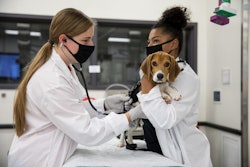As we head into a new decade, we are tasked with preparing engineers and computer scientists to lead a transforming workforce.
In just five years, the workforce will require an additional 65,000 engineers. By 2028, we will need 593,900 new computer scientists. And by 2030, an Institute for the Future study estimates that 85% of today’s learners will occupy jobs that don’t even exist yet. These future jobs will be in the emerging areas of artificial intelligence, smart cities and autonomous vehicles.
How then do we fill such large numbers of higher-skilled engineering and technology workforce? It must be by widening the pipeline to include people from backgrounds traditionally underrepresented in STEM fields – women and minorities.
We face the reality that women make up less than a fourth of the technology workforce, less than a fifth of computer science majors — and just 8% of those students intending to major in engineering.
The ratio is even smaller for black and Hispanic women.
Despite decades of concerted efforts to bridge the gender gap in STEM, the gulf continues to widen. This harsh reality was reinforced by a study last year that analyzed nearly 3 million computer science research papers over a 45-year span and declared that we will not realize gender parity in published research this century. This, despite the fact that the computer science field has been shaped by pioneers such as Ada Lovelace, Katherine Johnson and Grace Hopper.
The prognosis is only somewhat less grim in biomedical engineering, where gender parity in published research is seen by as late as 2050.















